Introduction
In the dynamic landscape of data analytics, Microsoft Power BI emerges as a powerful ally for organizations seeking to harness their data effectively. The comprehensive documentation surrounding Power BI serves as an invaluable resource, guiding users through the intricacies of data visualization and analysis.
From user manuals to troubleshooting tips, this documentation equips individuals with the knowledge needed to navigate challenges and maximize the platform’s capabilities. As businesses transition towards greater BI adoption, understanding and utilizing these resources becomes essential for overcoming obstacles related to data integration and security.
By exploring real-world applications and leveraging innovative solutions like Robotic Process Automation (RPA), organizations can transform their operational efficiency and decision-making processes, turning data into a strategic asset.
This article delves into the multifaceted benefits of Power BI documentation, revealing practical applications and strategies that empower users to elevate their data analysis efforts and drive business growth.
Understanding Microsoft Power BI Documentation: An Overview
The Microsoft Power BI documentation is an essential resource for individuals eager to utilize the full capabilities of Power BI for analysis and visualization. This comprehensive guide, based on Microsoft Power BI documentation, includes manuals, best practices, and troubleshooting tips tailored to enhance experience while addressing common challenges. As emphasized by Kira Belova,
Embrace the power of BI with PixelPlex to transform your information into a strategic asset.
Comprehending this material is essential for efficiently navigating the platform, enabling individuals to utilize its features to their fullest potential. Beyond facilitating a seamless initial setup, the Microsoft Power BI documentation encourages ongoing learning and adaptation, equipping users to tackle new challenges throughout their information journey. This is particularly important as organizations strive for higher BI adoption levels, transitioning through stages from low (0-10) to full adoption (41-50).
Notably, information integration and information security pose significant challenges in self-service business intelligence, accounting for 20% and 14% of the issues faced, respectively. These challenges can hinder effective information management and decision-making processes. The case study titled ‘Streamlining Operations with GUI Automation’ illustrates how a mid-sized company improved efficiency by automating tasks, enhancing software testing, and integrating legacy systems seamlessly, with outcomes including a 70% reduction in entry errors and an 80% improvement in workflow efficiency.
This case study exemplifies how addressing operational challenges through automation can lead to better data management and informed decision-making. With thorough records and practical solutions such as RPA and customized AI, individuals can significantly enhance their operational efficiency and decision-making processes, transforming challenges into opportunities for growth.
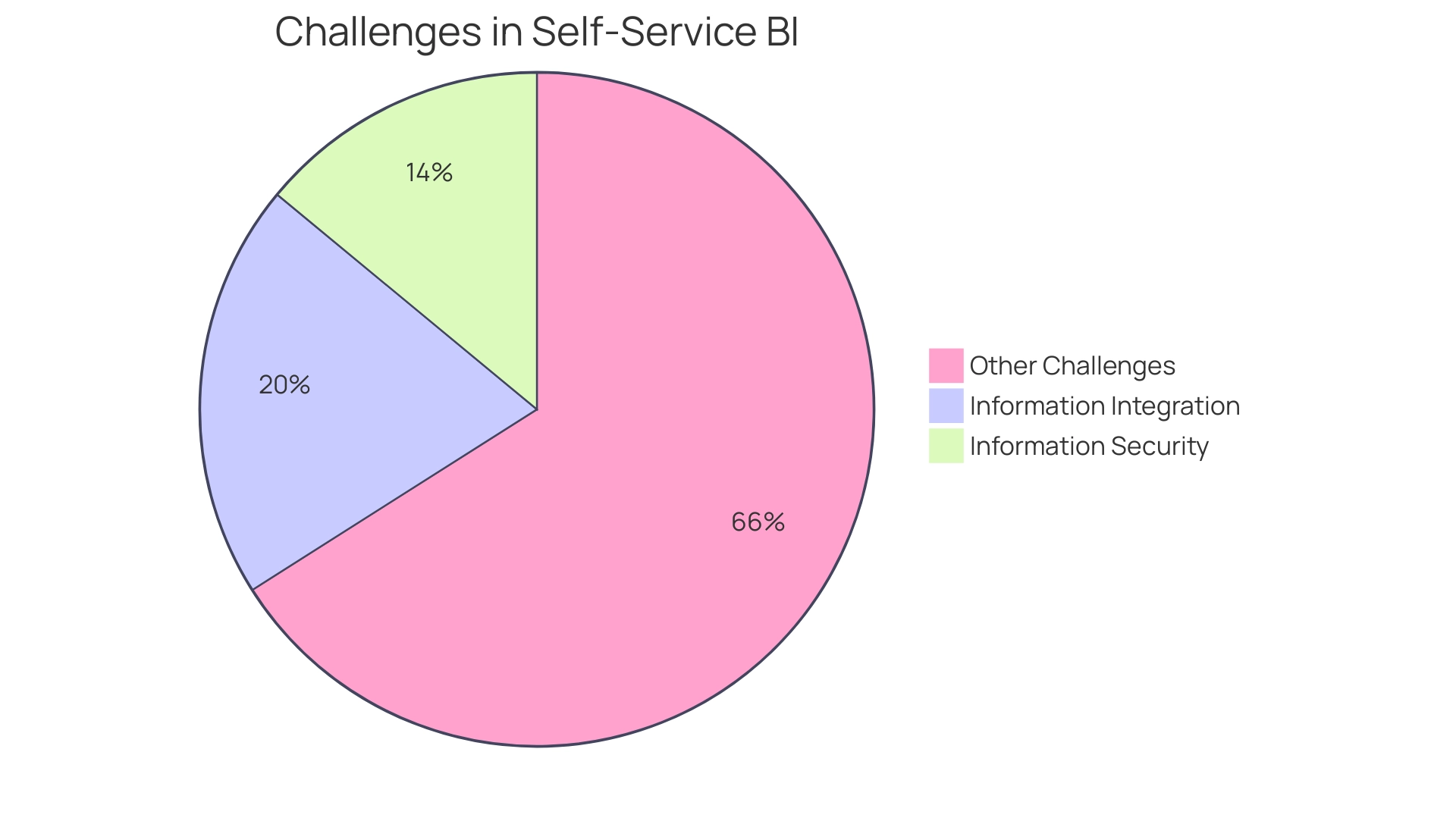
Exploring Resources and Support in Power BI Documentation
The Microsoft Power BI documentation serves as a vital resource hub, providing an extensive array of tools designed for individuals across all experience levels. It includes step-by-step tutorials and engaging video guides that enable individuals to handle the intricacies of information management effectively. However, individuals often face operational challenges such as time-consuming report creation and data inconsistencies, which can hinder their efficiency.
To address these issues, individuals are encouraged to view on-demand sessions with database experts and the Microsoft product team to learn about Fabric Databases, which significantly supports their learning journey. Community forums and FAQs offer platforms for collaboration and support, allowing participants to share insights and tackle challenges together. Additionally, the Microsoft Power BI documentation includes valuable case studies, such as ‘Creating a Fresh Usage Metrics Report,’ which illustrates how individuals can refresh their browser and create a new report to ensure access to updated metrics.
This practical example motivates individuals to innovate while creating their dashboards. Additionally, it is crucial to recognize that some clients may presently be unable to view or download the usage metrics semantic model from the BI service, emphasizing the necessity for individuals to remain aware of available resources. By actively engaging with these resources, users not only deepen their understanding of BI’s robust functionalities but also enhance their troubleshooting skills, ultimately promoting a more efficient information analysis process.
To further streamline workflows, integrating RPA solutions like EMMA RPA and Automate can significantly reduce the burden of repetitive tasks, allowing teams to focus on more strategic initiatives. Scott Sugar, Head of ProServeIT’s Ho Chi Minh City office, emphasizes the importance of these resources, noting that ‘with over 20 years of experience in the IT industry, understanding the effective use of documentation is crucial for success in data and analytics.’ This method guarantees that individuals can optimize the advantages of BI and RPA, fostering both personal development and operational efficiency.
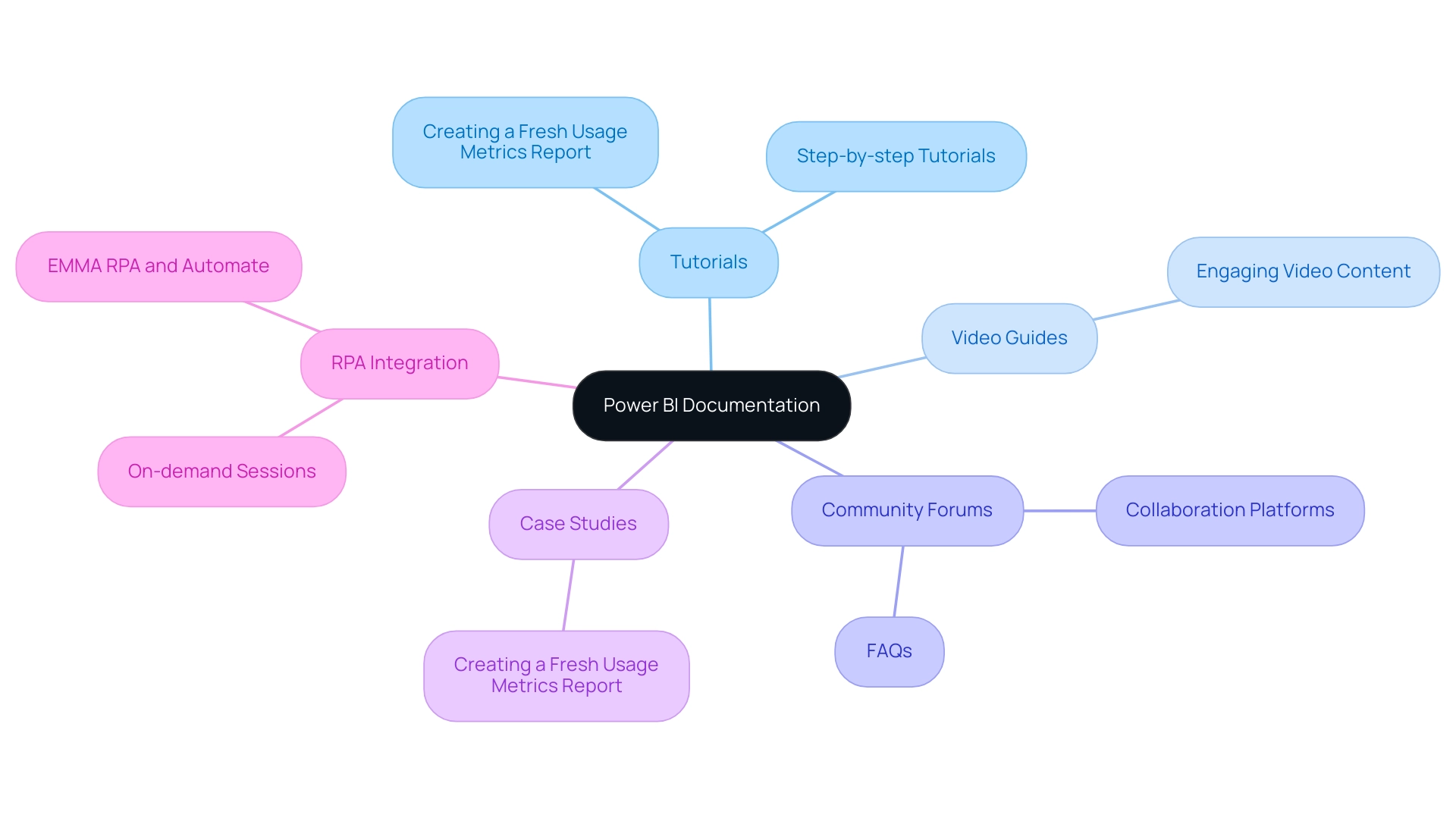
Integrating Power BI with Other Tools and Platforms
Power BI stands out for its exceptional ability to integrate seamlessly with a variety of tools and platforms, such as Excel, Azure, and SQL databases. With over 120 available connectors, users can effortlessly pull information from multiple sources, crafting a comprehensive view of their business metrics. This integration is not merely about information aggregation; it significantly enhances the analysis process, leading to more informed decision-making.
Furthermore, our BI services provide a 3-Day Sprint that enables the swift development of expertly crafted reports, ensuring effective reporting and information consistency. As emphasized by Amira Bed, a noted Most Valuable Professional, by combining BI with Office 365 and Teams, stakeholders can collaborate on insights in real-time, speeding up decision-making processes. Additionally, the General Management App provides comprehensive management tools and smart reviews, further empowering organizations to streamline operations.
The extensive assortment of connectors and custom visuals in BI not only enriches information integration but also enhances workflow efficiency and information protection. A notable example of Power BI’s flexibility is illustrated in the case study titled ‘Unification of BI Tools through Open API,’ which demonstrates how Power BI’s open API facilitates the unification of various BI tools into a single interface, fostering a collaborative environment tailored to specific workflows. The Microsoft Power BI documentation for these integrations is comprehensive, providing detailed instructions to ensure users can efficiently link their sources.
By mastering these integration capabilities and utilizing Robotic Process Automation (RPA) to automate manual workflows, organizations can significantly enhance their analysis and operational efficiency. RPA enhances BI by streamlining repetitive tasks, allowing teams to focus on strategic initiatives. Furthermore, our actions portfolio offers a range of solutions to enhance your BI experience, and we invite you to book a free consultation to explore how we can support your journey towards data-driven insights that fuel business growth.
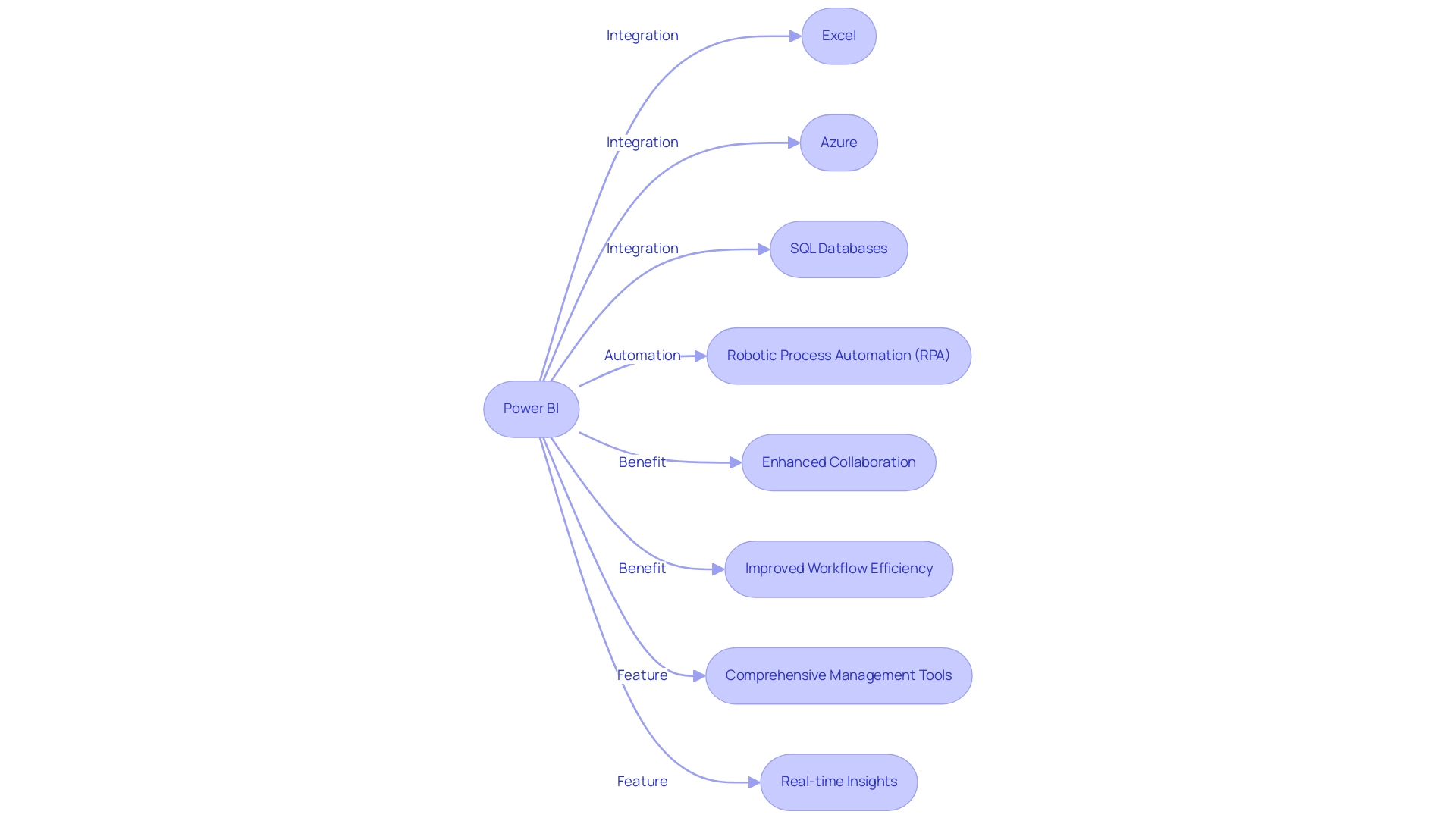
Practical Applications of Power BI Documentation in Data Analysis
The Microsoft Power BI documentation serves as a treasure trove of practical applications designed to enhance information analysis efforts and drive operational efficiency. Users can navigate through detailed guides to create interactive dashboards that offer real-time visualization of key performance indicators (KPIs). For instance, Amazon utilized BI to visualize and analyze sales and customer insights, overcoming significant challenges in data management such as time-consuming report creation and data inconsistencies.
Additionally, a financial institution adopted BI to monitor key financial metrics, which improved risk management and enhanced strategic planning. Furthermore, the Microsoft Power BI documentation includes case studies that illustrate how organizations have effectively adopted BI to tackle specific business challenges, such as monitoring sales performance and optimizing marketing campaigns. A notable example is Antdata, which implemented a Business Intelligence reporting tool using BI to enhance budget supervision and automate calculations, eliminating manual processes and ensuring compliance with GDPR.
This automation significantly impacted the organization by providing an up-to-date view of its resources. By exploring these real-world applications, individuals can uncover best practices and innovative approaches that empower them to transform their analysis strategies. Moreover, integrating Robotic Process Automation (RPA) solutions can further enhance the efficiency of these processes, addressing challenges like task repetition fatigue and staffing shortages.
Effective sharing of data analysis workflows and code is crucial for maximizing the capabilities of BI, enabling teams to collaborate efficiently and enhance their analytical processes.
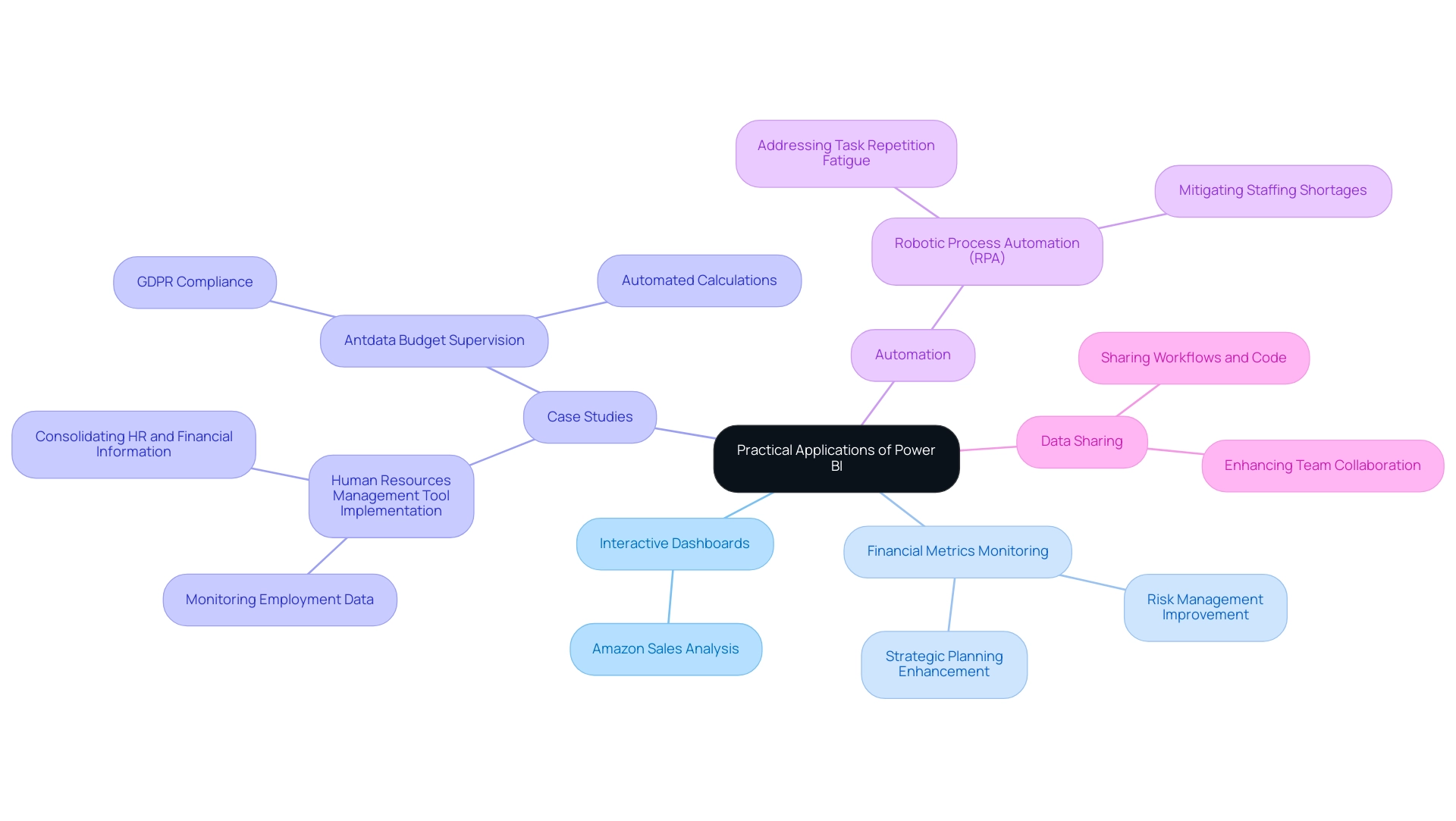
Keeping Up with Updates: The Importance of Current Power BI Documentation
Maintaining up-to-date Power BI documentation is essential for individuals looking to optimize their experience with the platform and overcome technology implementation challenges. Microsoft consistently rolls out updates that introduce new features, enhancements, and best practices, all meticulously documented for reference. By staying informed about these updates, individuals can leverage the latest tools and functionalities, significantly enhancing their data analysis capabilities and driving operational efficiency.
Effective records not only highlight new features but also provide step-by-step guidance on how to implement them, ensuring organizations can navigate the complexities of a data-driven landscape competently. As phuang, a frequent visitor, expressed, ‘Thanks a lot! It works perfectly!
Your file really helps me; I had spent many hours in this visual and felt so lost.’ This sentiment highlights the importance of accessible resources in streamlining user engagement and driving efficiency. Furthermore, processing data for usage metrics reports requires that content is viewed from the workspace at least once.
The case study titled ‘Cross-Checking Referential Integrity‘ illustrates how verifying the Assume Referential Integrity setting in relationships can optimize query performance in DirectQuery sources, reinforcing the significance of keeping BI documentation updated to unlock actionable insights and enhance decision-making. Additionally, integrating Robotic Process Automation (RPA) can further streamline workflows for individuals interacting with Power BI, reducing the time spent on repetitive tasks. Tailored AI solutions can assist in navigating the complexities of data management, ensuring that users can focus on deriving insights rather than getting bogged down by the technical details.
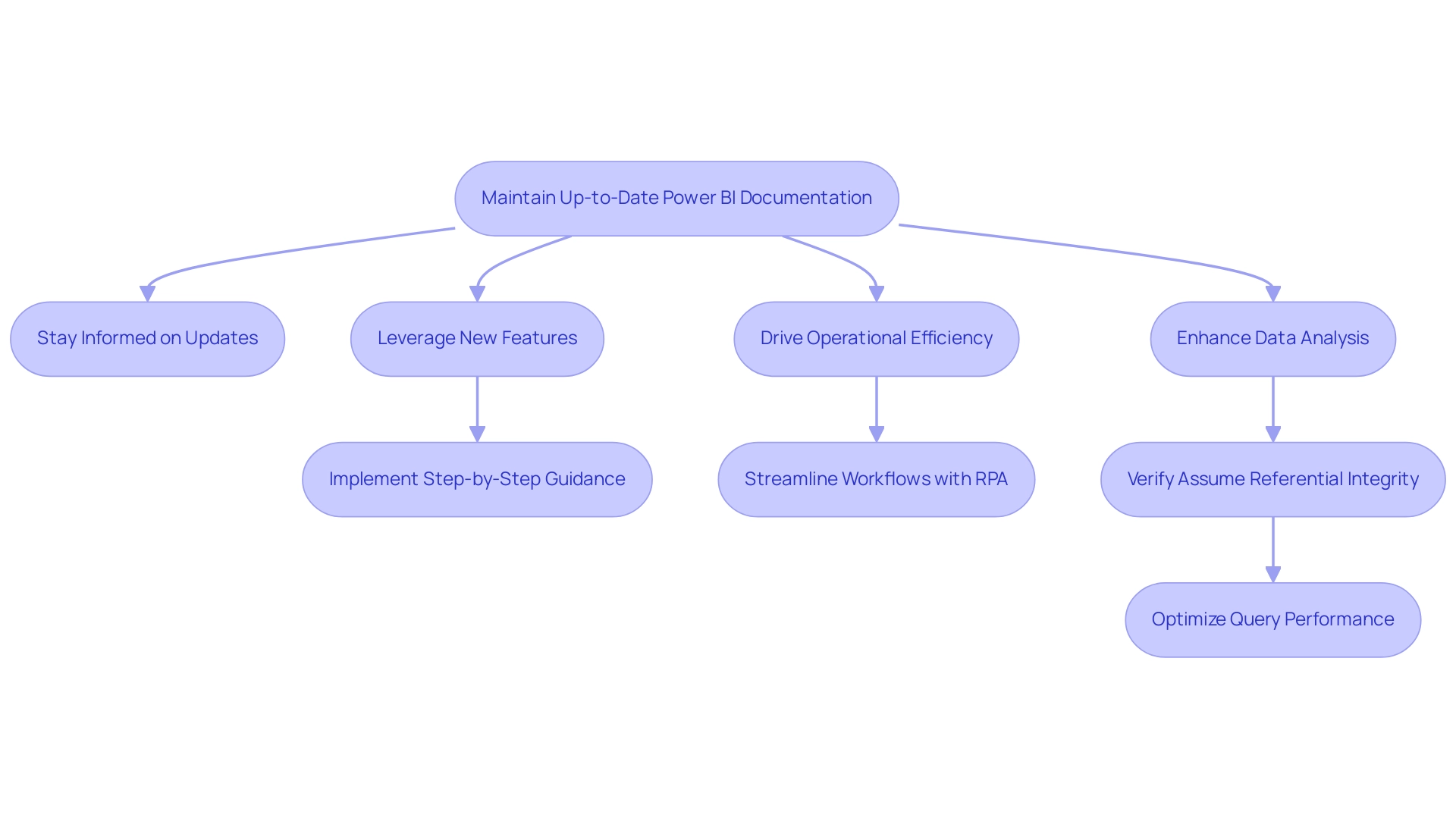
Conclusion
Harnessing the power of Microsoft Power BI documentation is crucial for organizations striving to enhance their data analysis and operational efficiency. This comprehensive resource equips users with the knowledge to navigate complexities and overcome common challenges, such as data integration and security issues. By engaging with user manuals, best practices, and troubleshooting tips, individuals can maximize their use of Power BI, ensuring that data becomes a strategic asset rather than a hurdle.
The integration of Power BI with various tools and platforms further amplifies its capabilities, allowing users to create a cohesive view of their business metrics. The documented case studies provide tangible examples of how organizations have successfully implemented Power BI to streamline operations and improve decision-making processes. Additionally, leveraging solutions like Robotic Process Automation (RPA) can significantly reduce the burden of repetitive tasks, freeing teams to focus on strategic initiatives that drive growth.
Staying current with updates in Power BI documentation is equally essential. Continuous learning through the latest features and enhancements ensures that organizations remain competitive in a data-driven landscape. By actively utilizing these resources, users can foster a culture of innovation and efficiency, transforming challenges into opportunities for success. Ultimately, embracing the full potential of Power BI documentation empowers organizations to elevate their data analysis strategies and drive impactful business outcomes.

